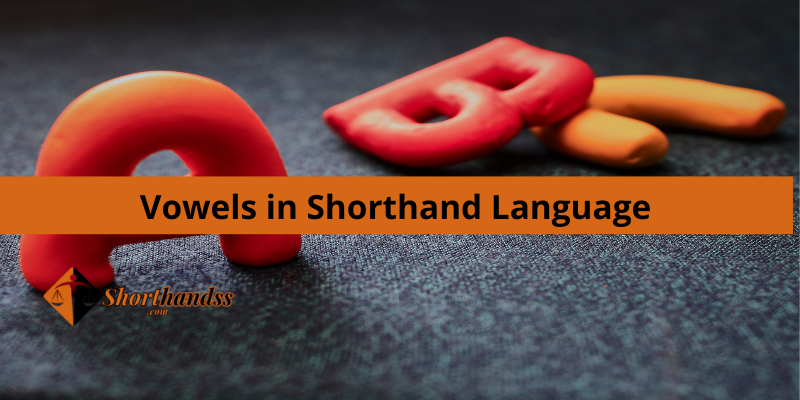Shorthand is the quickest system of writing in the world due to this its vowels are divided into three places. Here we discuss first-place vowels. The next four vowels are written in the first place. When the first vowel in a word is a first-place vowel, the outline or stroke is written in the first position/above the line. This rule implements on the first upward or downward stroke. If the first position strokes consist of a horizontal outline then we write strokes above the line.
Long Vowel “ah”
The long vowel “ah” is the first vowel of first place. It produces the sound of “ah”. It is represented by a heavy dot (.) and is always written at the beginning of the stroke, For example “pa”, “ma” etc.
Short Vowel “a”
The long vowel “a” is the second vowel of first place. It produces the sound of “a” or in the Urdu sound of “ay”. It is represented by a light dot (.) and is always written the beginning of the stroke, For example “at”, “pack” etc.
Long Vowels “aw”
The long vowel “aw” is the third vowel of first place. It produces the sound of “aw” or in Urdu the sound of “wahoo”. It is represented by a heavy dash (-) and always written the beginning of the stroke, For example, “Saw”, “Paw” etc.
Short Vowel “o”
The short vowel “o” is the fourth and last vowel of first place. It produces the sound of “o” but the duration of the sound is very short. It is represented by a light dash (-) and always written the beginning of the stroke, For example, “top”, “dog”, “job” etc.

Third Place Vowels in Shorthand
Third Place Vowel: According to the rules of pitman shorthand the last four vowels are written in the third place. In third place when a third-place vowel comes between two strokes, it is put in the third place before the second stroke. When a third-place vowel is the first vowel in any word then we write stroke through the line and this rule was implemented on the first up or down stroke and vowels place the end of the signal stroke.
Long Vowel “e”
The long vowel “e” is the first vowel of third place. It cleanly produces the sound of “e” and the duration of the sound is long. It is represented by a heavy dot (.) and always placed the end of the stroke, For example, “eat”, “tea”, “see”, etc.
Short Vowel “i”
The short vowel “i” is the second vowel of third place. It produces the sound of “i” and the duration of the sound is very short. It is represented by a light dot (.) and always written end of the stroke, For example, “if”, “bit” “pick”, etc.
Long Vowel “oo”
The long vowel “oo” is the thirds vowel of third place. It clearly produce sound of “oo” and in Urdu sound of “oohho”. The duration of sound is long and it is represented by heavy dash(-) and always written end of the word, for example “shoe”, “food”, “pool”, etc.
Short Vowel “oo”
The short vowel “oo” is the last vowel in third place. It produces the sound of “oo” and sounds like “hook” type. The duration of the sound is very short. It is represented by a light dash and always written end of the word, for example, “book”, “took”, and “look”.

Positions in Short hand Language
The Second position is also called the second place. When a second-place vowel is the first vowel in the word then the outline is written in the second position, due to this, the first upstroke or downstroke rests on the line. If the first vowel in any word is the first place vowel then we write the first upward stroke or downward stroke above the line. It is called first position or first place. When a third-place vowel is the first vowel in any word then we write the first upward or downward stroke across the line. It is called third position or third place. If a word consists of only horizontal strokes then we write horizontal strokes in its proper position.
Note
- The sound of “y” at the end of the word is represented by a light dot.
- When a word consists of only horizontal strokes and the first vowel is a third-position vowel, then an outline is written on the line, and the vowel is placed end of the stroke.
- At the end of the word drop the “i” vowel in the termination of “ing”.
For Shorthand related jobs

